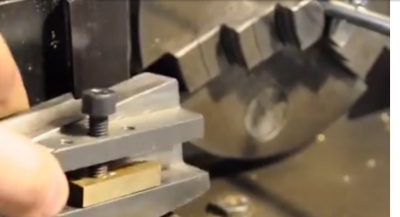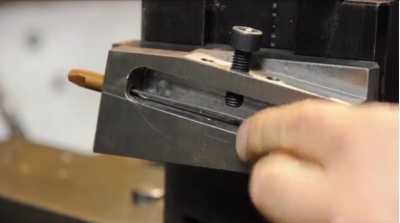Welcome to our forum. A Message To Our New and Prospective Members . Check out our Forum Rules. Lets keep this forum an enjoyable place to visit.
Currently working on errors from the latest (SimplePress) forum update. Many issues have been resoled and others are being worked on. Thank you for your patience.
 Topic RSS
Topic RSS



 (3 votes)
(3 votes) Regulars


How does steel core string tension compare with nylon core string tension?
I'm intending to replace the D and A on my violin with nylon cored strings, and leave the G as a steel cored item, as I'm not dissatisfied with its tone and it's fairly fresh (and I'm a skin-flint).
My main concern is the possible differential mechanical load on the two sides, given that the E will be a steel in any case. I may be over-thinking this, but I don't want to do a bad thing (apart from the possible tone-colour mix).
Peter
"It is vain to do with more that which can be done with less" - William of Ockham
"A crown is merely a hat that lets the rain in" - Frederick the Great
Regulars
 Offline
Offline





There's a vast difference between weight-for-weight tensions, but the string designers will probably have designed the strings so that every set will have approximately the same tension per string. Steel has highest tension, but the steel core will generally be smaller in diameter than the nylon core, bringing the tension back down again. (this is the guesswork of an optimist). A guitar for steel strings would have a more solid construction than a guitar for nylon strings.
You might have success googling it. Somewhere like the Shar website might contain technical data somewhere. Here's Gamut for a start, but they are for early music, so no steel, and they re possibly useless.
Andrew
Verified human - the ignominy!
Regulars







Regulars







Gordon Shumway said
There's a vast difference between weight-for-weight tensions, but the string designers will probably have designed the strings so that every set will have approximately the same tension per string. Steel has highest tension, but the steel core will generally be smaller in diameter than the nylon core, bringing the tension back down again. (this is the guesswork of an optimist).
This is not really true. String tension varies quite widely between string brands. Although steel cores generally are smaller in diameter, the lowest tension steel strings are still higher tension than almost all synthetics.
Fine tuners are an absolute necessity for steel strings but not for synthetics, because of higher tension and lower elasticity.
Regulars







Here's a string tension chart covering multiple manufacturers.
https://www.violinstringreview.....201409.png
There are seven steel string sets listed here: the six highest-tension sets, and Spirocore which is still relatively high tension.
Regulars


Mmm.
I checked Shar's website; they present their strings in a useful chart rating the strings for tone / attack, and as an engineer I appreciate that.
I will take it that I have nothing to fear, other than finding my D and A fine-tuners somewhat redundant. As for the G, I can always replace that as pocket money allows, or my ear demands.
For what it's worth, the existing strings are cheap'n'cheerful Adagio Pro, and the new ones (on my desk here) are Pirastro Tonica, also cheap and well-recommended (I must stop tinkering, and work on my scales).
Thank you for your time and effort, gentlemen.
Peter
"It is vain to do with more that which can be done with less" - William of Ockham
"A crown is merely a hat that lets the rain in" - Frederick the Great
Regulars


AndrewH said
Here's a string tension chart covering multiple manufacturers.https://www.violinstringreview.....201409.png
There are seven steel string sets listed here: the six highest-tension sets, and Spirocore which is still relatively high tension.
Do you know what units the (agggregate) tension in the x-axis is in?
Great chart, BTW.
Peter
"It is vain to do with more that which can be done with less" - William of Ockham
"A crown is merely a hat that lets the rain in" - Frederick the Great
Regulars


Hi cid,
Having a degree in engineering and the professional registration means I haven't had the time to follow my passion as a musician!
I so admire people who have committed great amounts of time and effort to learning how to play, and I can only do my best to follow in their wake. I'm on the slow run-down to retirement (please don't tell my employer...), and I guess only then will my time as a musician really flourish. I'd retire and play all day long if I could afford to.
The other issue, as you have identified above, is that I'm one of those cursed with The Knack, wherein I suffer from the need to analyse everything in some detail, and not always in the same way as regular folk do. I'm also somewhat introverted, which means I have a lot more time on my hands; I think (over-think!) about things rather than talk about them. This doesn't necessarily allow me to make the right choices, though!
Without the Fiddlerman forum, I'd have applied a variety of tests to the strings and drawn inferences about their compatibility from what I'd find, but instead you lovely people have all the answers.
Grateful and pleased as always.
Peter
"It is vain to do with more that which can be done with less" - William of Ockham
"A crown is merely a hat that lets the rain in" - Frederick the Great











Nothing pertinent to add to the responses - it's all been said -
Reason for post is @Peter - your signature -
It is vain to do with more that which can be done with less" - William of Ockham
- which reminds me of a line in Nevil Shute's "Trustee from the Toolroom"
An engineer is a man who can do for five bob what any bloody fool can do for a quid
I seriously recommend not copying my mistakes. D'oh -
Please make your own, different mistakes, and help us all learn :-)
Regulars
 Offline
Offline

@peter and others. I am intrigued and perplexed by your original post. I have never found purchasing individual strings to be economically viable (with the exception of the Lenzner Goldbrokat “e” string, that can be purchased for $1.65 each on this side of the pond and is the grandest value in the violin world). Please explain your reasoning on why you believe me wrong on this.
@Mouse . Engineers never retire. It is a thought process and a way of life. We just move on to other topics as we age. Troubles come when we direct our attention to philosophy.
Success is the progressive realisation of a worthy ideal. —Earl Nightingale.
Regulars


So true, BillyG.
The William of Ockham (more famous for his razor) quote was inspired by the late Rev. George Dobbs, the founder of the G-QRP radio club. George was a devoted minimalist in the world of radiocommunication, and his 1970s Ladybird book, "How To Make a Transistor Radio" put many young people on the road to being adept at radio construction. He is sadly missed; the quote was used in his email signature, and I remain a member of the G-QRP club in spite of walking away from amateur radio to follow my other passion, music. George was a top bloke, a Yorkshireman.
Peter
"It is vain to do with more that which can be done with less" - William of Ockham
"A crown is merely a hat that lets the rain in" - Frederick the Great
Regulars


Hi .@Irv, it's complicated.
I'm terrible with money, and I entrust all to the memsahib. I ask only a few pounds spending money each month, and I found that I had enough to buy the middle two strings in the desired brand, but not a whole set. I could have asked the Cashier to buy the set (she would have done so), but there was felt to be a principle at stake.
The Antique is currently strung with modestly-priced steel, and I wanted to try synthetics. The E will always be a steel, and I'm not unhappy with the G's tone, so it seemed like a solid plan. Then they arrived on my desk this morning, and I started to think about the consequences of mixing tensile differences.
The bottom line is that I don't consider you wrong, but that I consider my position to be complicated.
Peter
"It is vain to do with more that which can be done with less" - William of Ockham
"A crown is merely a hat that lets the rain in" - Frederick the Great
Regulars
 Offline
Offline





It all depends how you define the word "approximately" that I used in my first post.
The tension set .png to my mind shows reasonable approximate balance, although admittedly you can argue large percentages on the Larsen strings. Worse and it wouldn't be about the fine tuner on the E string, it would be about the whole tailpiece being pulled out of of position diagonally if the tensions were too unbalanced. I suppose the other three counter-balance the E.
The sort of differences that steel could give are in the thousands of percent. That's why the E string is so thin.
The OP was originally about something like Helicores' contrast with nylons, and there's not a lot to worry about within the ballpark that the .png shows.
Andrew
Verified human - the ignominy!
Regulars
 Offline
Offline

Regulars


Irv said
@peter . Do you have, or have access to, a machine lathe (the one that has a lead screw)? If so, I can tell you how you can convert a $2 e string into a $7 e string in a few seconds.
I do have such access; there's a lathe in the workshop behind me, and I'm intrigued. Are you suggesting a controlled-strain work hardening?
Peter
"It is vain to do with more that which can be done with less" - William of Ockham
"A crown is merely a hat that lets the rain in" - Frederick the Great
Regulars
 Offline
Offline

@peter and @Mouse (or her husband thereof). Check out the Warchal Amber e string (or look at photo below) and notice the coil arrangement. I made a spring drawing jig for my quick change tool holder and chuck a 3 mm steel mandrill. In a few seconds, my cheap Goldbrokat get an upgrade.
I also have a photo that I based my jig if you want a look. Leather or draftman erasers can be used for the friction source to hold back the wire.

Success is the progressive realisation of a worthy ideal. —Earl Nightingale.
1 Guest(s)


 Log In
Log In Register
Register









 Online
Online





